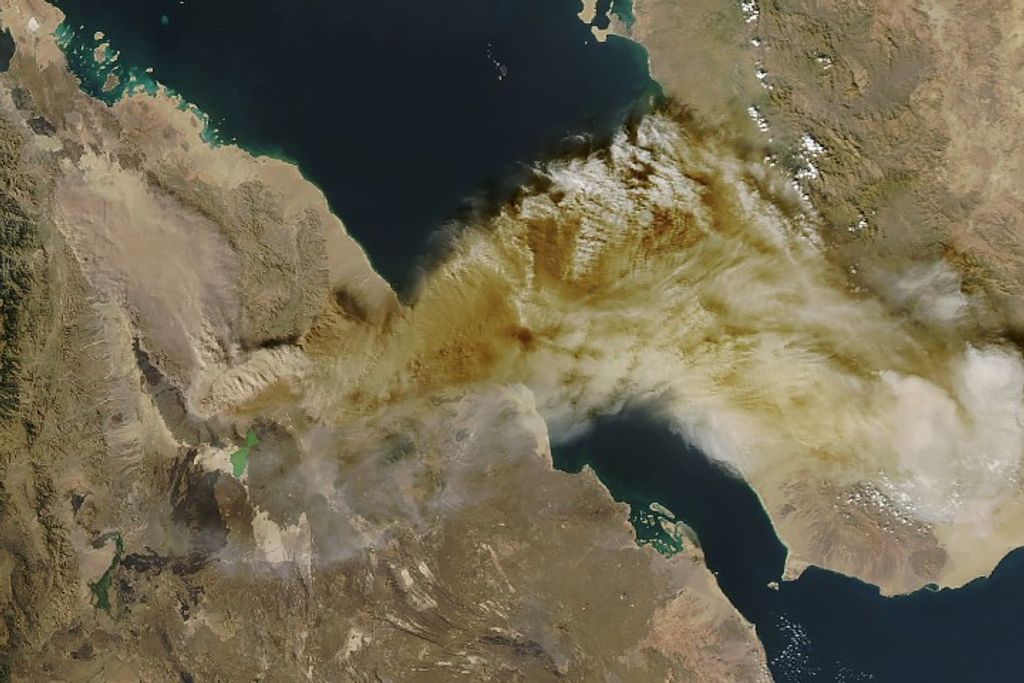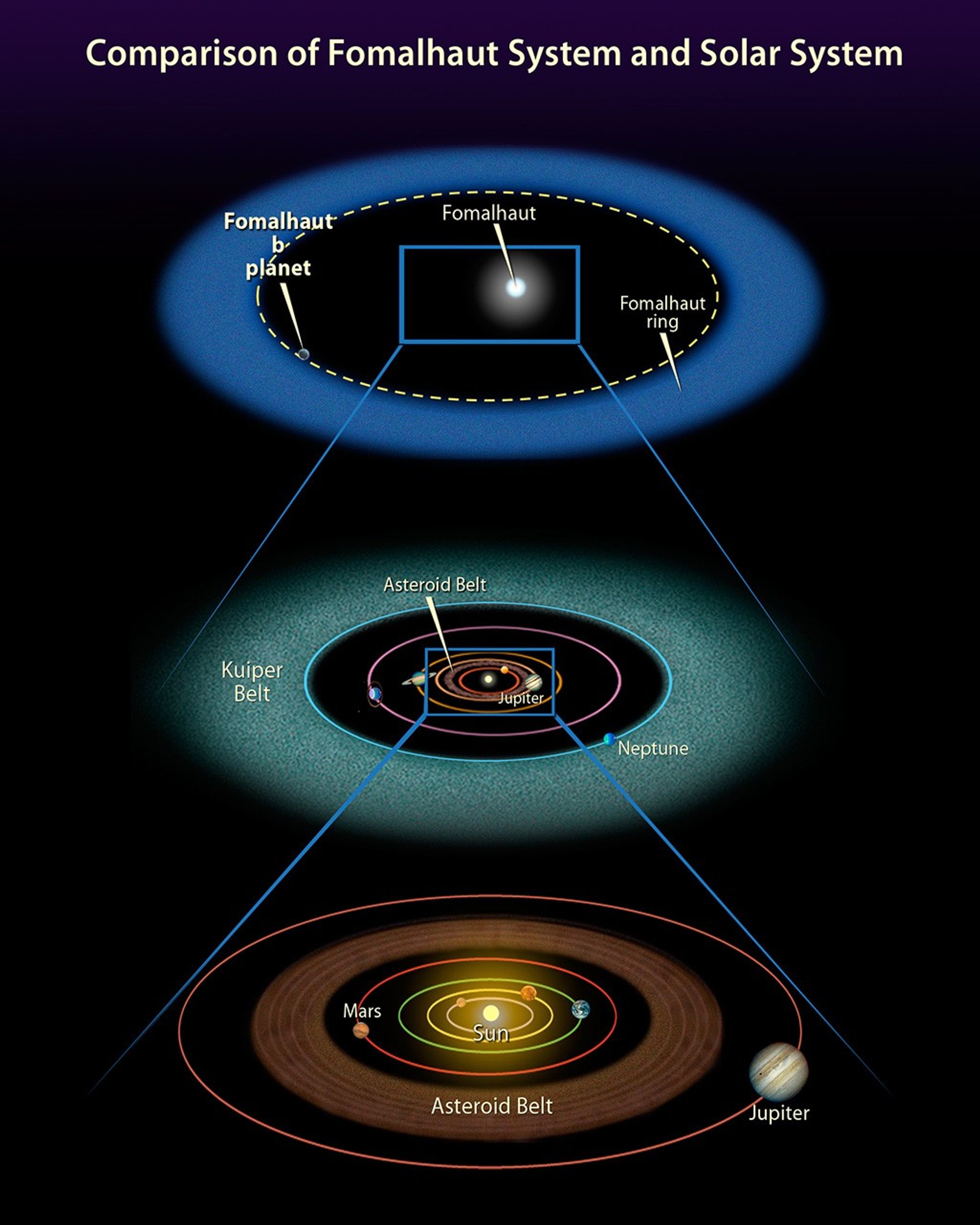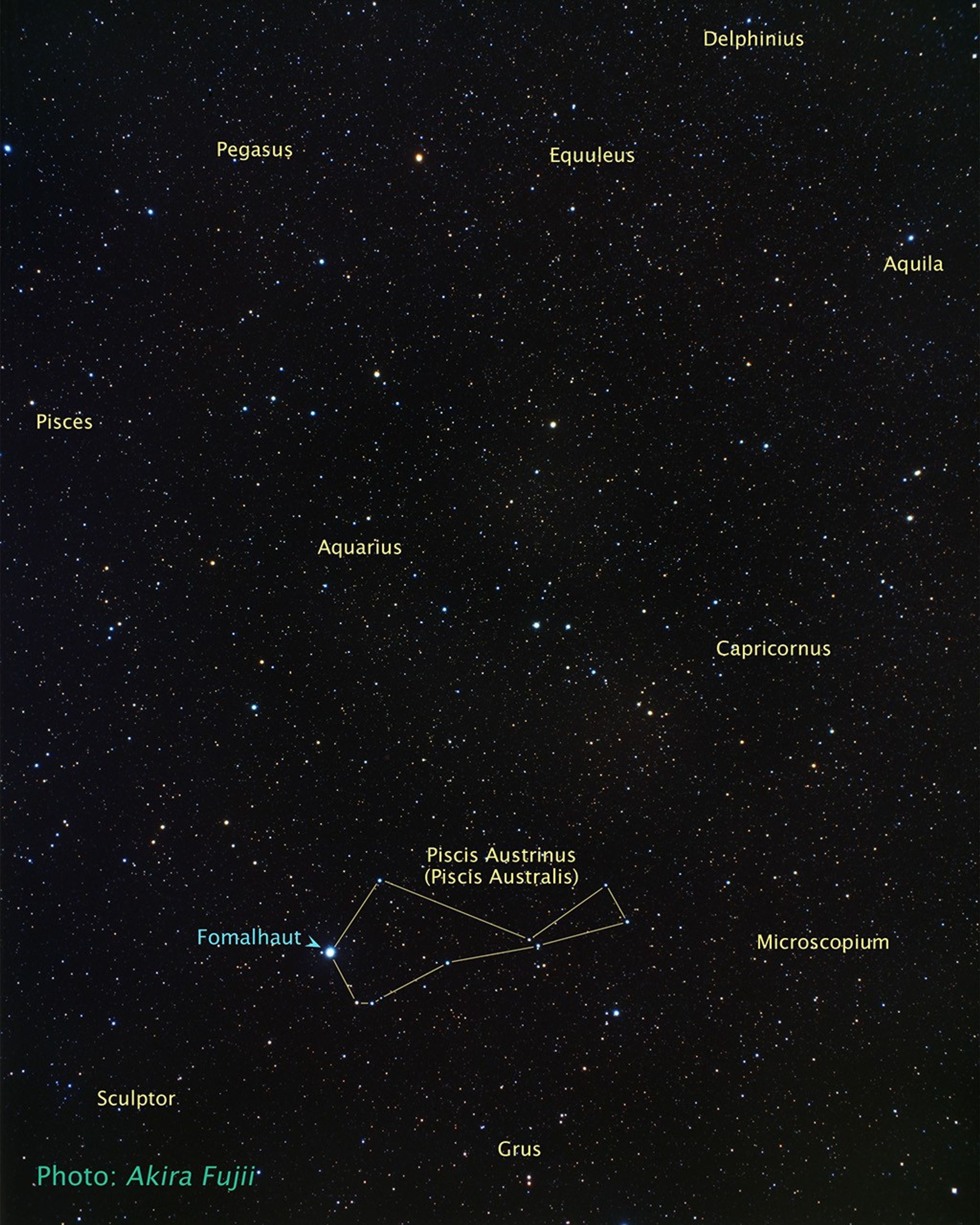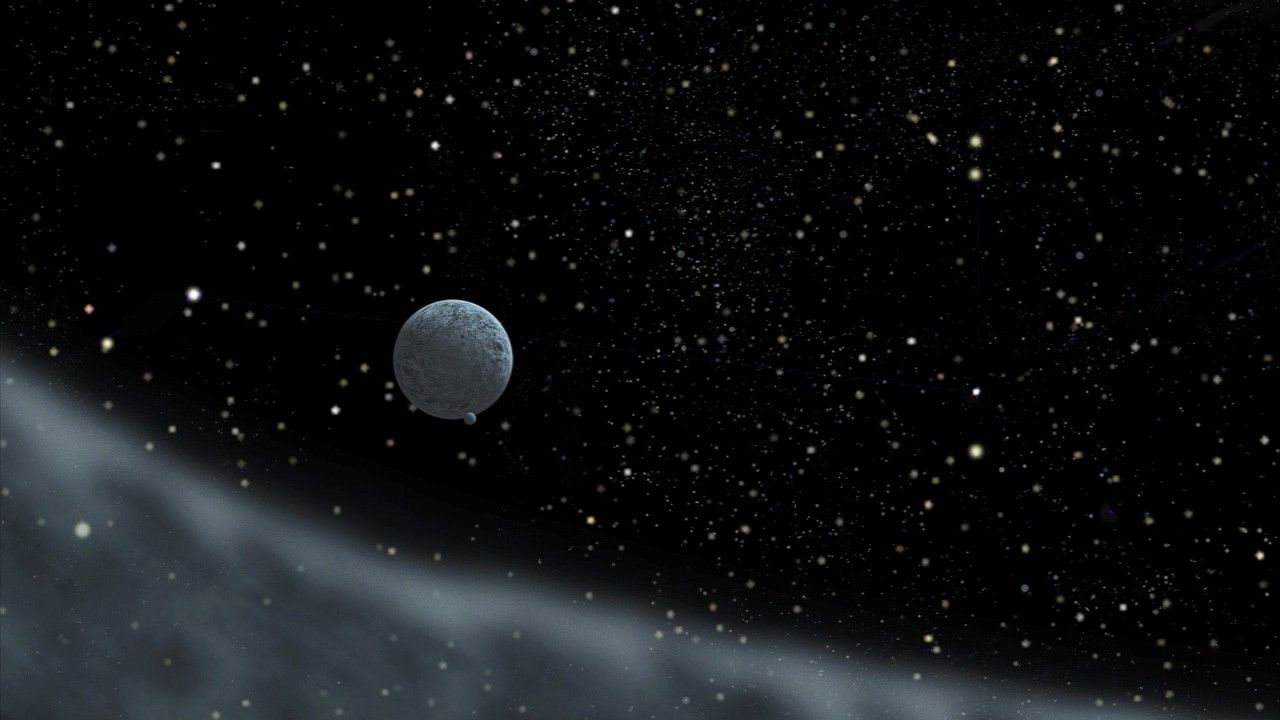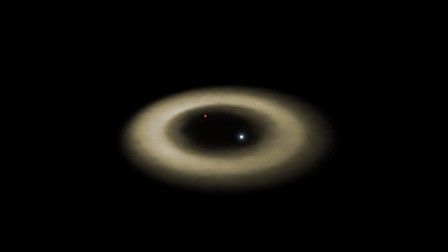1 min read
HST Image of Fomalhaut and Fomalhaut b
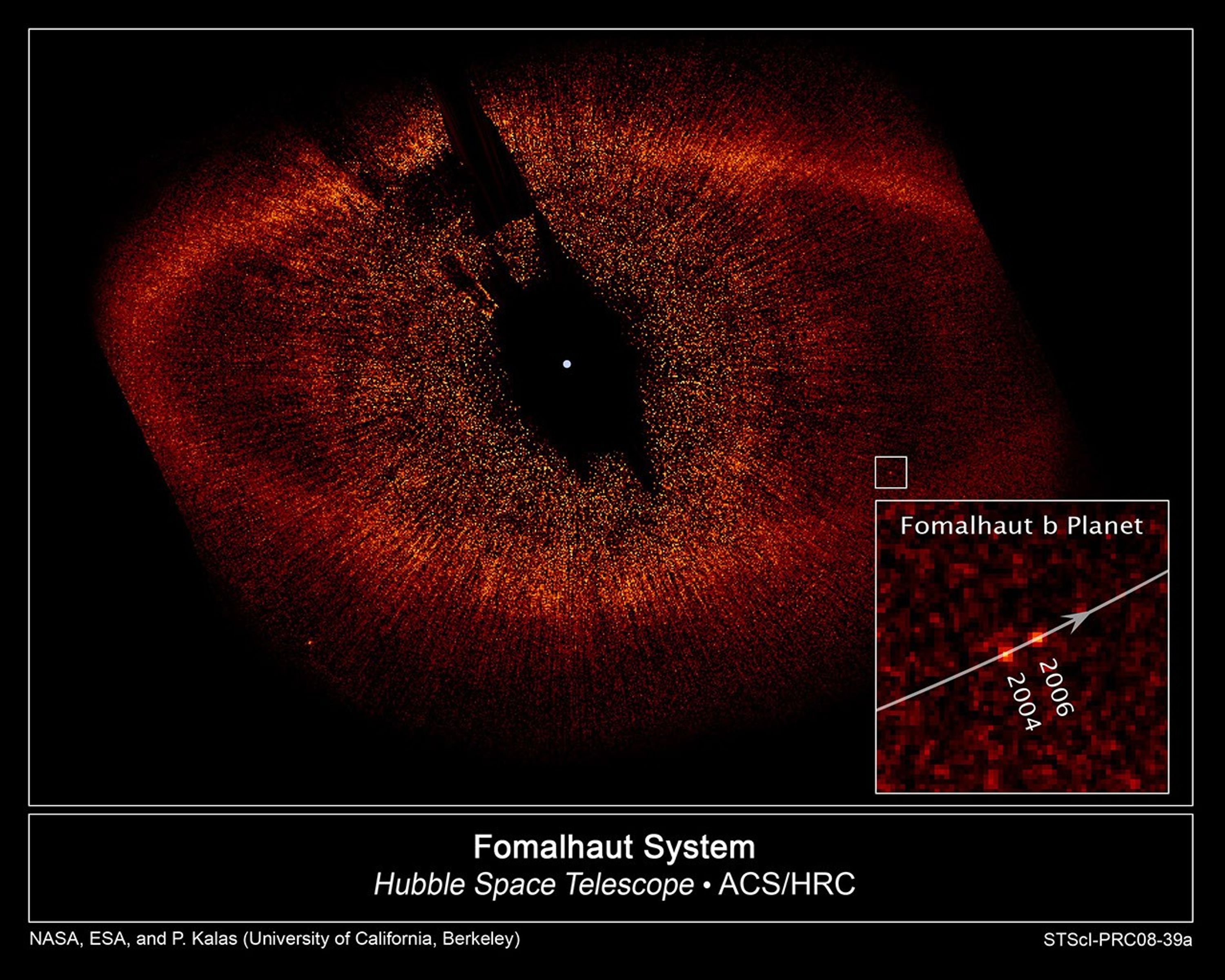
This image, taken with the Advanced Camera for Surveys aboard NASA's Hubble Space Telescope, shows the newly discovered planet, Fomalhaut b, orbiting its parent star, Fomalhaut.
The small white box at lower right pinpoints the planet's location. Fomalhaut b has carved a path along the inner edge of a vast, dusty debris ring encircling Fomalhaut that is 21.5 billion miles across. Fomalhaut b lies 1.8 billion miles inside the ring's inner edge and orbits 10.7 billion miles from its star.
The inset at bottom right is a composite image showing the planet's position during Hubble observations taken in 2004 and 2006. Astronomers have calculated that Fomalhaut b completes an orbit around its parent star every 872 years.
The white dot in the center of the image marks the star's location. The region around Fomalhaut's location is black because astronomers used the Advanced Camera's coronagraph to block out the star's bright glare so that the dim planet could be seen. Fomalhaut b is 1 billion times fainter than its star. The radial streaks are scattered starlight. The red dot at lower left is a background star.
The Fomalhaut system is 25 light-years away in the constellation Piscis Australis.
This false-color image was taken in October 2004 and July 2006.
About the Object
- R.A. PositionR.A. PositionRight ascension – analogous to longitude – is one component of an object's position.22h 57m 39.04s
- Dec. PositionDec. PositionDeclination – analogous to latitude – is one component of an object's position.-29° 37' 20.04"
- ConstellationConstellationOne of 88 recognized regions of the celestial sphere in which the object appears.Piscis Austrinus
- DistanceDistanceThe physical distance from Earth to the astronomical object. Distances within our solar system are usually measured in Astronomical Units (AU). Distances between stars are usually measured in light-years. Interstellar distances can also be measured in parsecs.25 light-years (8 parsecs)
- DimensionsDimensionsThe physical size of the object or the apparent angle it subtends on the sky.This image is roughly 375 AU (49 arcseconds) wide.
About the Data
- Data DescriptionData DescriptionProposal: A description of the observations, their scientific justification, and the links to the data available in the science archive.
Science Team: The astronomers who planned the observations and analyzed the data. "PI" refers to the Principal Investigator.HST Proposal: 10390 P. Kalas and J. Graham (University of California, Berkeley) and M. Clampin (NASA Goddard Space Flight Center); and 10598: P. Kalas, J. Graham, and E. Chiang (University of California, Berkeley), M. Clampin (NASA Goddard Space Flight Center), and K. Stapelfeldt and J. Krist (NASA Jet Propulsion Laboratory). The science team includes: P. Kalas and E. Chiang (University of California, Berkeley), M. Fitzgerald (Lawrence Livermore National Laboratory), M. Clampin (NASA Goddard Space Flight Center), E. Kite (University of California, Berkeley), J. Krist and K. Stapelfeldt (NASA Jet Propulsion Laboratory), and J. Graham (University of California, Berkeley). - InstrumentInstrumentThe science instrument used to produce the data.HST>ACS/HRC
- Exposure DatesExposure DatesThe date(s) that the telescope made its observations and the total exposure time.October 2004 and July 2006, Exposure Time: 11.4 hours
- FiltersFiltersThe camera filters that were used in the science observations.F435W (B), F606W (V), and F814W (I)
- Object NameObject NameA name or catalog number that astronomers use to identify an astronomical object.Fomalhaut, HD 216956, Fomalhaut b
- Object DescriptionObject DescriptionThe type of astronomical object.Exoplanet Orbiting Fomalhaut
- Release DateNovember 13, 2008
- Science ReleaseHubble Directly Observes Planet Orbiting Fomalhaut
- Credit

Related Images & Videos

HST ACS/HRC Wide View of Fomalhaut System
This image of the area around the star Fomalhaut was taken with the Advanced Camera for Surveys instrument aboard NASA's Hubble Space Telescope. The region around Fomalhaut's location is black because astronomers used the Advanced Camera's coronagraph to block out the star's...

Artist's Concept of Exoplanet Orbiting Fomalhaut
This illustration shows the newly discovered planet, Fomalhaut b, orbiting its sun, Fomalhaut. A structure comprised mostly of brown and gold colors surrounds Fomalhaut b. This structure is a Saturn-like ring that astronomers say may encircle the planet. Fomalhaut also is...
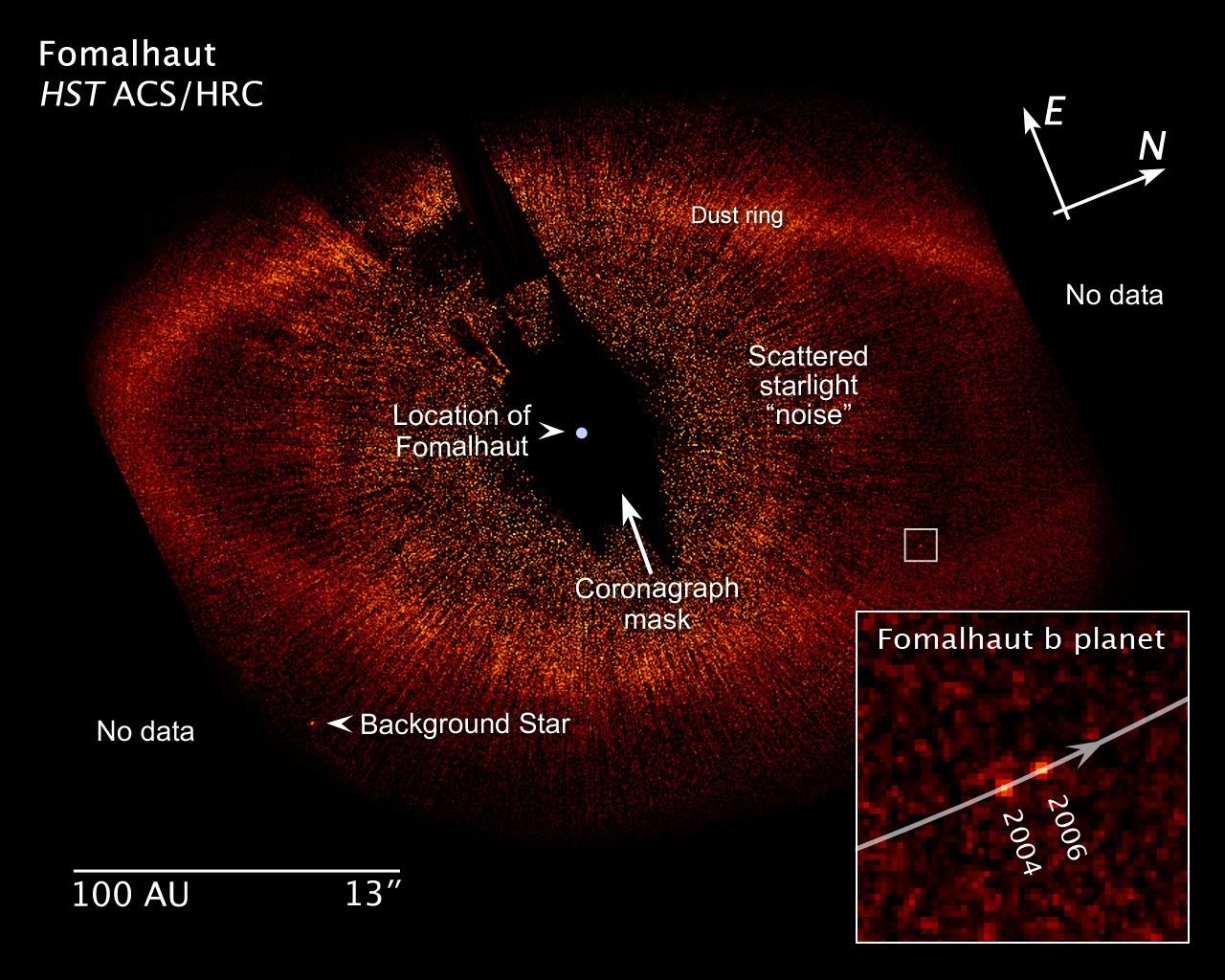
Annotated Illustration of Fomalhaut System
This image, taken with the Advanced Camera for Surveys aboard NASA's Hubble Space Telescope, shows the newly discovered planet, Fomalhaut b, orbiting its parent star, Fomalhaut. The small white box at lower right pinpoints the planet's location. Fomalhaut b has carved a path...
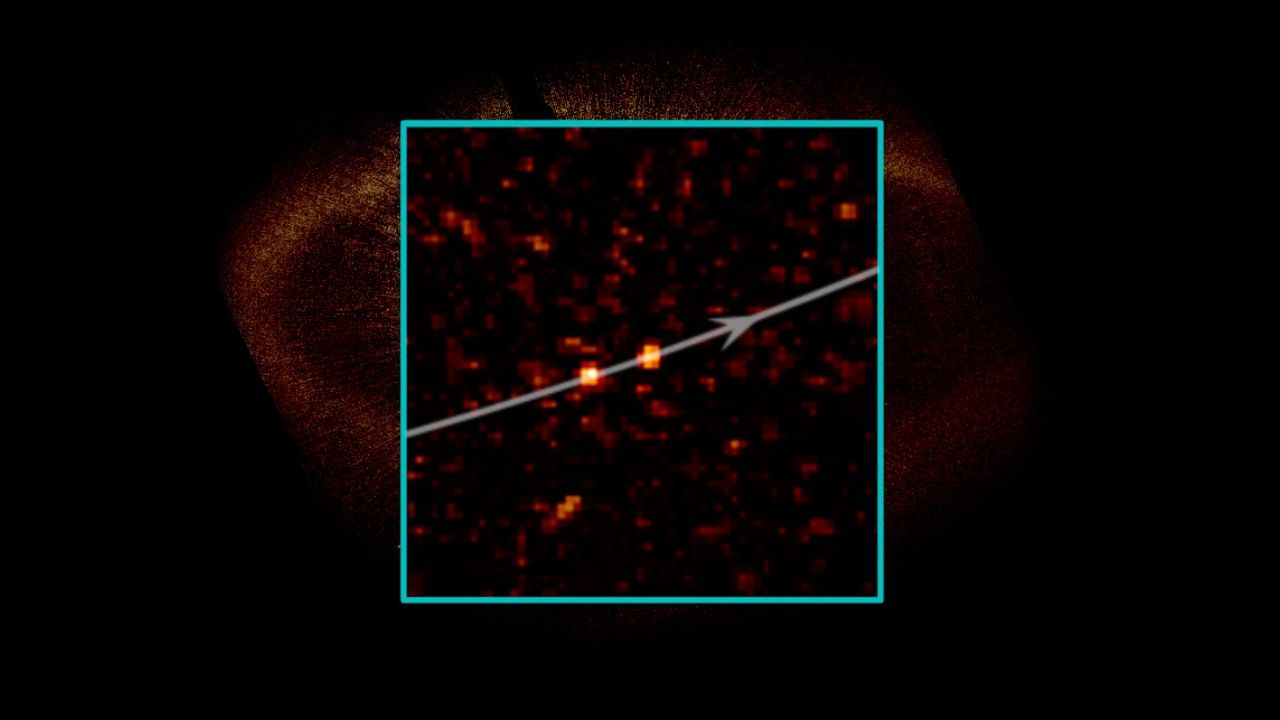
Hubble Proves Existence of a Planet Orbiting Another Star
For the first time ever, astronomers have confirmed the existence of a planet orbiting another star. The planet, called Fomalhaut b, orbits the bright southern star Fomalhaut and is located 25 light-years away from Earth. Hubble's Advanced Camera for Surveys captured...
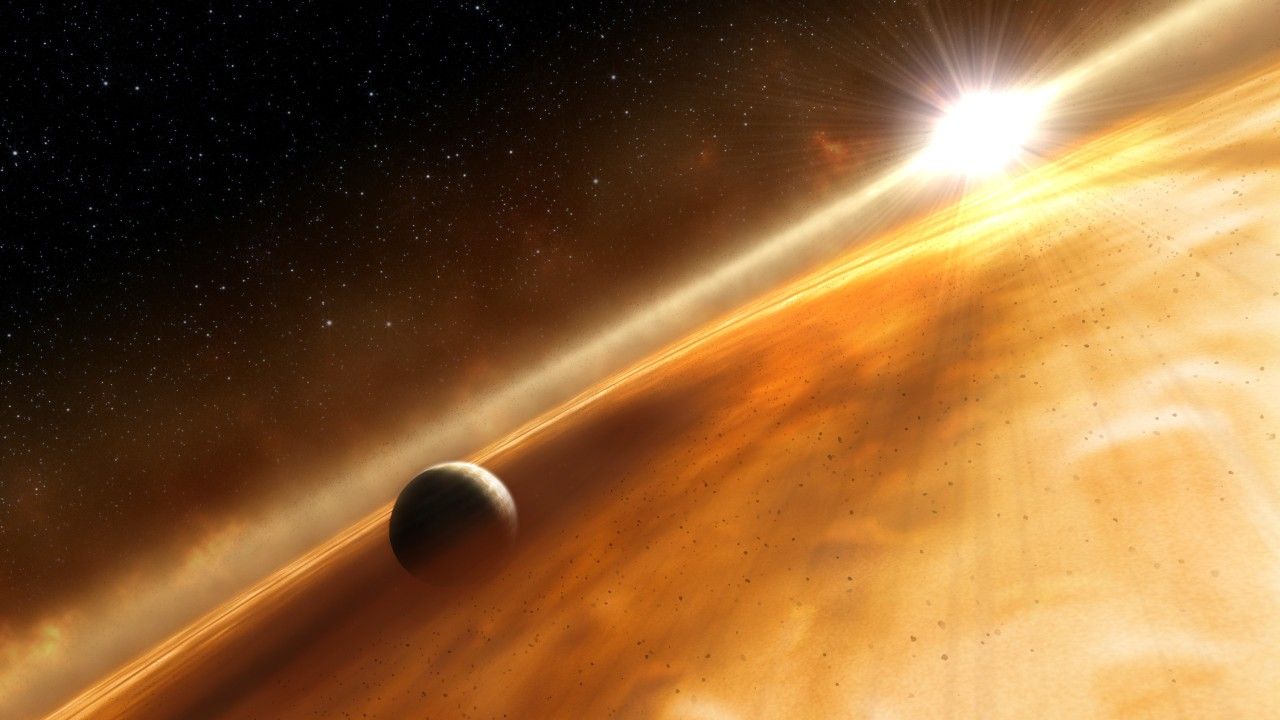
Fomalhaut System Illustration (Pan and Zoom)
This artist's rendition shows a planet circling a star 16 times brighter than our sun. The planet is estimated to complete a full orbit around the star Fomalhaut in 872 years. For a planet three times the size of our Jupiter, it is much brighter than expected. One possibility is...
Share
Details
Claire Andreoli
NASA’s Goddard Space Flight Center
Greenbelt, Maryland
claire.andreoli@nasa.gov









